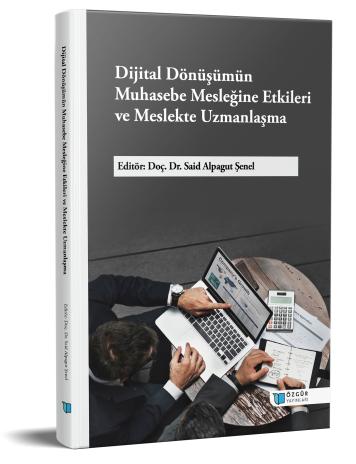
Acceptance of Digital Accounting Applications by Professional Accountants
Chapter from the book:
Şenel,
S.
A.
(ed.)
2025.
The Effects of Digital Transformation on the Accounting Profession and Specia-lization in the Profession.
Synopsis
The digital revolution refers to a period characterised by the rapid development of technology and the integration of digital technologies into everyday life. This revolution encompasses significant transformations in information and communication technologies (ICT) and has led to fundamental changes in social, economic and cultural areas. With the digital revolutions, all processes in enterprises have been redesigned and communication networks have been established, commercial transactions and information transfer have started to take place very quickly in these digital environments. For this reason, it has become inevitable for businesses to undergo digital transformation and for their employees to adapt to this digital transformation in order to ensure their sustainability in the competitive environment and to maintain their competitive advantages. In this study, it is aimed to reveal the acceptance of digital accounting practices by the members of the accounting professions with the titles of Certified Public Accountant (CPA) and Chartered Accountant (CA) who are members of the Union of Chambers of Certified Public Accountants Turkey (TÜRMOB), professional interns and unlicensed accounting professionals in the position of accounting employees and managers in accounting departments in the private sector within the framework of the technology acceptance model. For this purpose, the questionnaire form prepared based on the variables of the research model was applied through Google Forms and 428 data were collected. Structural Equation Modelling (SEM) analysis was performed to test the effects of the variables in the research model. The results of the analysis show that perceived ease of use has statistically significant and positive effects on perceived usefulness; perceived usefulness and perceived ease of use have positive effects on attitude towards use; technological innovation and self-efficacy have positive effects on perceived ease of use; attitude towards use and self-efficacy have positive effects on behavioural intention; technological innovation, perceived usefulness and behavioural intention have statistically significant and positive effects on usage behaviour.

